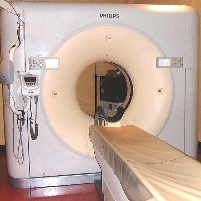FDA Moves to Reduce Radiation Exposure from Medical Imaging
Friday, February 19, 2010
 CAT Scan
CAT Scan
In an effort to reduce unnecessary exposure to radiation, the Food and Drug Administration is developing new guidelines for the medical industry to follow for certain kinds of tests. The rules will govern the use of three types of medical imaging procedures: computed tomography (CT or CAT scan), nuclear medicine studies and fluoroscopy.
FDA officials are focusing on just these three because of their risk of overexposure for patients if the tests are not performed correctly or are administered without justification. All three utilize ionizing radiation which can increase a patient’s lifetime cancer risk or cause immediate injury, such as skin burns, hair loss and cataracts, if the tests are done improperly. A single CT abdomen scan exposes a person to the same amount of radiation as 400 chest x-rays. In comparison, a dental x-ray is equivalent to only half of a single chest x-ray.
-Noel Brinkerhoff
FDA Unveils Initiative to Reduce Unnecessary Radiation Exposure from Medical Imaging (Food and Drug Administration)
- Top Stories
- Unusual News
- Where is the Money Going?
- Controversies
- U.S. and the World
- Appointments and Resignations
- Latest News
- Musk and Trump Fire Members of Congress
- Trump Calls for Violent Street Demonstrations Against Himself
- Trump Changes Name of Republican Party
- The 2024 Election By the Numbers
- Bashar al-Assad—The Fall of a Rabid AntiSemite






Comments